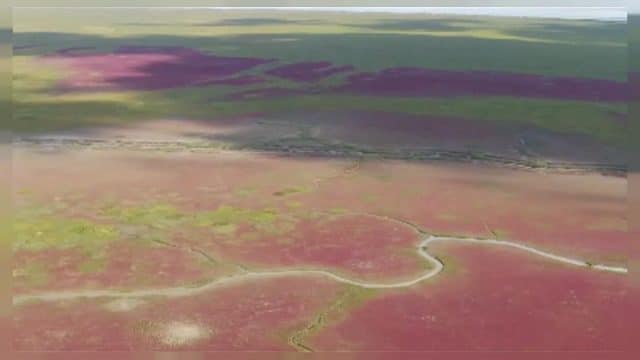
The Hyrcanian forests along the Caspian Sea in Iran and the migratory bird sanctuaries in the Gulf of China are among the new sites that made UNESCO’s emblematic World Heritage List this year.
Another five sites in France, Iceland, Burkina Faso, Iraq and Brazil have also been added.
The World Heritage Committee is having its annual meeting in Baku, Azerbaijan, until July 10, to decide which sites should be added to a portfolio that includes over 1,000 properties in 167 countries, from the Acropolis in Athens to the Taj Mahal in India.
The World Heritage Convention, adopted in 1972, is an international treaty through which nations commit to protecting the world’s natural and cultural heritage and pass on the legacy to future generations.
The committee has “the final say on whether a property is added to the World Heritage List. It examines reports on the state of conservation of inscribed properties and asks States Parties to take action when they are not being properly managed,” UNESCO said on its website.
The migratory bird sanctuaries along the coast of the Yellow Sea-Bohai Gulf of China was among the first sites to be inscribed this year (click on the above video player for more). Large gatherings of birds, including some of the world’s most endangered species, depend on the stunning wetland to moult, rest, winter and nest.
The Hyrcanian forests in Iran, also inscribed this Friday, date back 25 to 50 million years. They are home to remarkable biodiversity: “To date, 180 species of birds typical of broad-leaved temperate forests and 58 mammal species have been recorded, including the iconic Persian Leopard,” UNESCO said.
Five other sites were added later in the day.
They include the French Austral Lands and Seas which supports one of the highest concentrations of birds and marine mammals in the world. It has, for instance, the largest population of King Penguins and Yellow-nosed albatrosses in the world.
Iceland’s Vatnajökull National Park was also added. It numbers ten central volcanoes, eight of which are subglacial, and is home to endemic groundwater fauna that has survived the Ice Age as well as unique sandur plains, river systems and rapidly evolving canyons. These are the result of the interaction between volcanoes and the rifts that underlie the Vatnajökull ice cap.
Brazil’s Paraty and Ilha Grande were inscribed as well. The site is home to an impressive diversity of species, some of which are threatened, such as the jaguar, the white-lipped peccary and several primate species, including the woolly spider monkey and also boasts colonial architecture dating from the 18th and early 19th centuries.
Five ancient ferrous metallurgy sites across Burkina Faso also made the cut. They include about fifteen standing, natural-draught furnaces, several other furnace structures, mines and traces of dwellings, some dating back to the 8th century BCE, as is the case in Douroula.
Finally, the list now includes Babylon, in Iraq. The site includes the ruins of the city which, between 626 and 539 BCE, was the capital of the Neo-Babylonian Empire, which was one of the most influential empires of the ancient world.
The World Heritage Committee is also updating the List of World Heritage in Danger. This year, they have decided to include the islands and protected areas of the Gulf of California (Mexico) amid concerns about the imminent extinction of the vaquita, a marine mammal.
UNESCO experts will examine a total of 35 candidacies this year.







